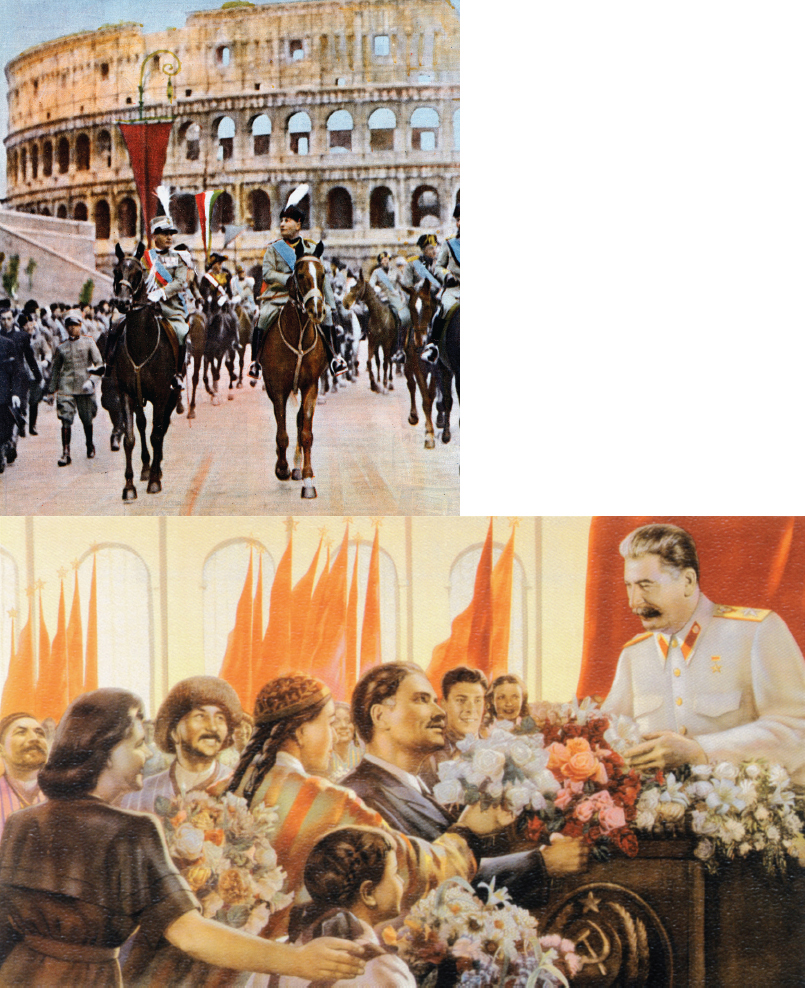
The Appeal of PropagandaTotalitarian leaders used extensive propaganda campaigns to enlist the support of the masses. Italian dictator Benito Mussolini repeatedly linked his regime to the glory of ancient Rome. Here he has donned the costume of a legionary to lead a parade in front of the Roman Coliseum (top). The Soviet dictator Stalin presented himself as the friend of all humankind. In this propaganda poster (bottom), titled “The Great Stalin is the Banner of Friendship Between the Peoples of the U.S.S.R.!,” he receives flowers from a diverse group of Soviet citizens, including ethnic Russians and East and Central Asians. This idealized testament to peaceful coexistence within the Soviet empire masked the tensions aroused by Russian domination. (© Mussolini: Stefano Bianchetti/Corbis; Stalin poster: The Granger Collection, New York)> PICTURING THE PASTANALYZING THE IMAGE: How do these images present the role of the dictatorial leader? How do they represent the relationship between the leader and the led?
CONNECTIONS: How might these idealized portrayals have helped build support for their respective regimes? Was there any truth behind the propaganda?
CONNECTIONS: How might these idealized portrayals have helped build support for their respective regimes? Was there any truth behind the propaganda?